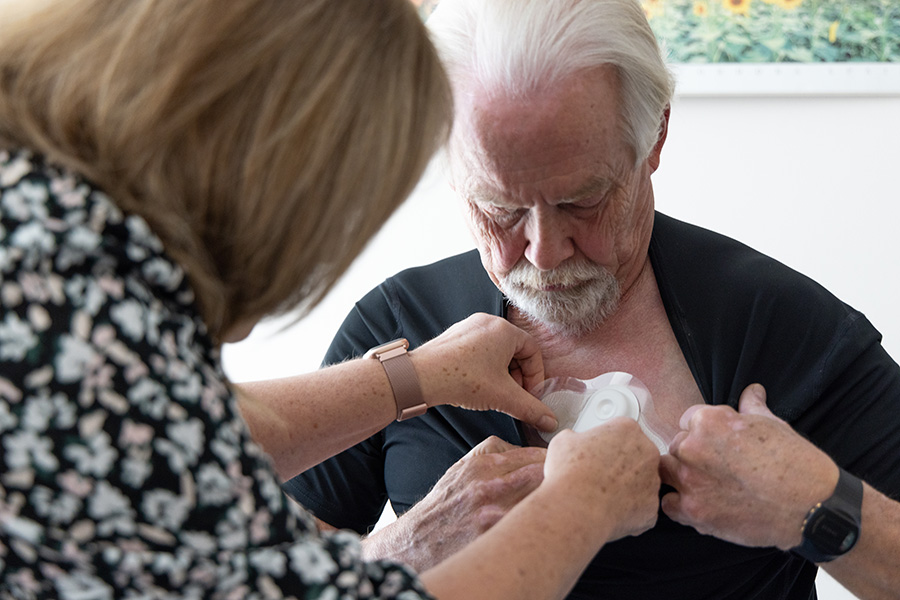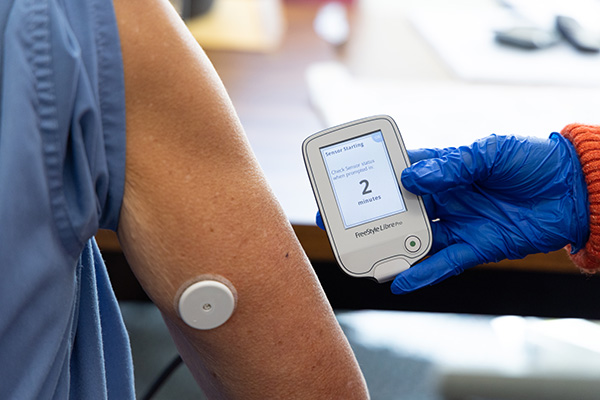
For 20 years, hundreds of people in St. Paul have volunteered their health data to the Multi-Ethnic Study of Atherosclerosis (MESA) — wearing monitors, answering questions, and tracking their heart health in the name of advancing science. Thanks to their efforts, and those of the researchers analyzing their data, the decades-long study has helped move the needle on cardiovascular disease research in countless key ways.
Since 2000, MESA collaborators from the School of Public Health (SPH) and five other U.S. universities have studied how asymptomatic cardiovascular disease progresses, and what factors contribute to this process. With funding from the National Institutes of Health, MESA researchers and study staff gather data on more than 6,000 men and women aged 45-84 from their six respective communities in the U.S., contacting them every 9 to 12 months. SPH Professor Jim Pankow leads MESA at the School of Public Health, having assumed the role in 2018. The original principal investigator, Professor Aaron Folsom, retired in June 2022.
“We owe them an enormous debt of gratitude for giving of their time and themselves.”
Jim Pankow

In the last 20 years, researchers have published more than 2,000 papers with MESA findings, highlighting crucial concepts, such as persistent racial and ethnic differences in overall and cardiovascular disease deaths and, recently, the impacts of air pollution on heart health. Pankow hopes MESA findings about air pollution, for example, will have an impact on policy. “Perhaps this will be another opportunity to reduce health disparities, because we have evidence to suggest air pollution exposures are not evenly distributed,” he says.
Sanaz Sedaghat, an SPH assistant professor and a new MESA co-investigator, says her access to MESA’s data helps her publish high-quality papers on a routine basis, setting her up for professional success.
Sedaghat also says that while the multi-ethnic make-up of MESA’s participants was ground-breaking at the time of the study’s inception, it remains one of the study’s biggest assets, alongside its longevity. “The data is [available through MESA] and it includes that of participants of diverse race and ethnicity,” says Sedaghat, who adds that as scientists expand their understanding of race as a social construct, MESA data has become all the more valuable. Roughly 38 percent of the recruited participants are white, 28 percent are African-American, 22 percent are Hispanic, and 12 percent are Asian.
MESA has also long concentrated on incorporating new technology. According to Pankow, it was one of the first to use cardiac CT scans and MRI imaging in a large-scale population study focusing on primary prevention. The study’s findings on these technologies, when they were emerging, helped solidify them as the gold-standard for cardiac care that cardiac specialists know them as today.

Now, MESA is focused on wearables. To Pankow, the sheer scope of how many wearables MESA incorporates into gathering patient data sets the study apart from peer investigations. Participants can, if they want to, wear a heart monitor patch, a continuous glucose monitor, a physical activity monitor, a sleep monitor, and more. Wearable technology helps the study investigators gather more data and perform even deeper analyses.
Through it all, MESA has helped researchers and physicians refine their approach to cardiovascular health. “There’s been a lot of emphasis over the years on individual-level behaviors and factors that contribute to risk of disease or health status,” Pankow says. But MESA places a strong emphasis on collecting data at the neighborhood level. And, thanks to MESA’s findings, many researchers across the field are pivoting toward looking into social determinants of health or underlying root causes of some of the disparities often found in cardiovascular health—helping to address the problem at a larger scale.
But for both Pankow and Sedaghat, the participants’ trust and willingness to be investigated keeps the whole ship afloat. And, as Sedaghat says, “It’s a lot of work!”
Adds Pankow: “We owe them an enormous debt of gratitude for giving of their time and themselves.”


